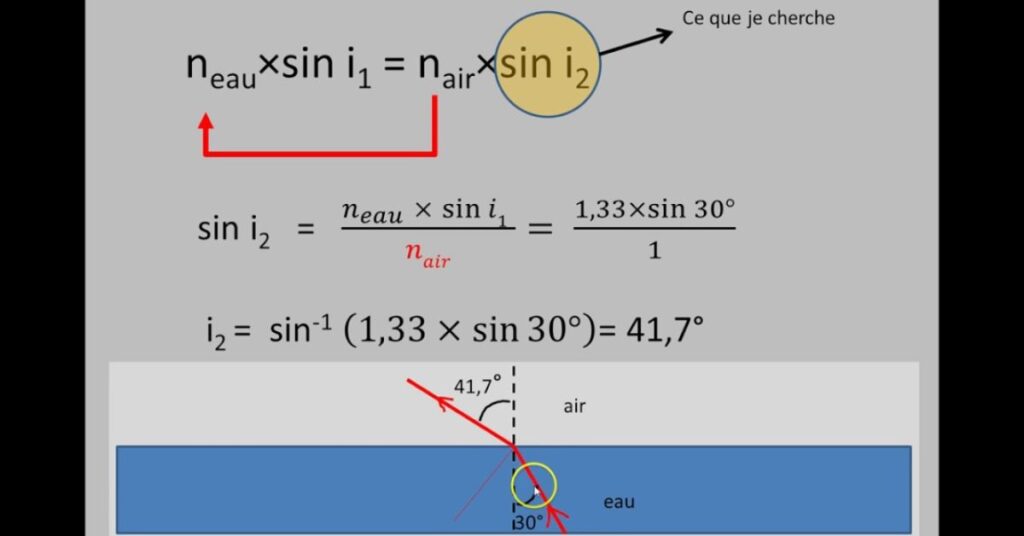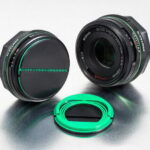Refraction is a fundamental phenomenon that occurs when light passes from one medium to another, changing its speed and direction. The science behind this behavior is governed by the Snell-Descartes Law, an essential principle in optics. This law, named after scientists Willebrord Snellius and René Descartes, explains how light refracts when it travels across different media, such as from air into water or glass. Understanding the Snell-Descartes Law is crucial not only in physics and optics but also in many real-world applications like eyeglasses, cameras, and even the behavior of light in nature.
In this article, we’ll dive deep into the Snell-Descartes Law, exploring its history, the science behind it, and its practical applications. Whether you are a student studying physics or someone curious about how light works, this guide will help clarify this important concept.
The Origins of the Snell-Descartes Law
The Snell-Descartes Law was named after two prominent scientists, Willebrord Snellius and René Descartes. Snellius, a Dutch astronomer and mathematician, first formulated the law in 1621, which described the relationship between the angles of incidence and refraction when light passes between two media. His work laid the foundation for understanding how light behaves during refraction. While Snellius discovered this relationship, it was later refined and popularized by Descartes, a French philosopher and mathematician, in his treatise La Dioptrique in 1637.
Despite Snell’s initial discovery, Descartes is often more associated with the popularization of the law, which is why it’s known by both their names. The Snell-Descartes Law has since become a cornerstone of optics and has paved the way for numerous discoveries and innovations in light-based technology.
What is Refraction?
Refraction refers to the bending of light as it passes from one medium to another with a different density, such as from air into water. The speed of light varies in different media, which causes the light to change direction when it enters a new medium. This bending is a result of the change in the light’s speed, which occurs due to the varying refractive indices of the substances involved.
For example, when light moves from air (a less dense medium) into water (a denser medium), it slows down and bends toward the normal line. On the other hand, if light travels from water into air, it speeds up and bends away from the normal. The angle at which the light enters the new medium and the angle at which it bends are key components of the Snell-Descartes Law.
The Snell-Descartes Law: Understanding the Formula
The Snell-Descartes Law describes how the angle of light changes as it moves from one medium to another. The law is often expressed with the following formula:n1sinθ1=n2sinθ2n_1 \sin \theta_1 = n_2 \sin \theta_2n1sinθ1=n2sinθ2
Where:
- n1n_1n1 and n2n_2n2 are the refractive indices of the first and second mediums, respectively.
- θ1\theta_1θ1 is the angle of incidence, which is the angle between the incident light ray and the normal line (an imaginary line perpendicular to the surface at the point of incidence).
- θ2\theta_2θ2 is the angle of refraction, which is the angle between the refracted light ray and the normal line.
Refractive Index
The refractive index (denoted by nnn) is a measure of how much a material can bend light. It’s calculated as the ratio of the speed of light in a vacuum to the speed of light in a given medium. The refractive index is always greater than or equal to 1, with higher values indicating denser media that slow light down more. For example, the refractive index of air is approximately 1.0, while the refractive index of water is around 1.33.
Angle of Incidence and Angle of Refraction
The angle of incidence (θ1\theta_1θ1) refers to the angle between the incoming light ray and the normal line, while the angle of refraction (θ2\theta_2θ2) refers to the angle between the refracted ray and the normal line. These angles are measured relative to the surface of the medium where the light is entering or exiting.
When light enters a new medium, the change in speed causes the angles of incidence and refraction to be related through the refractive indices of the media involved, as shown in the Snell-Descartes equation.
How the Snell-Descartes Law Works in Real-Life Scenarios
The Snell-Descartes Law has numerous real-world applications. Understanding how light refracts is crucial in various fields, from designing optical lenses to understanding natural phenomena like rainbows and mirages. Here are some examples of how the Snell-Descartes Law applies to everyday life.
Lenses and Optical Devices
One of the most common uses of the Snell-Descartes Law is in the design of optical lenses, including those used in eyeglasses, microscopes, and cameras. The lenses in these devices rely on the bending of light to focus it onto a particular point. The specific curvature and refractive index of a lens determine how light will bend when it passes through, allowing the lens to magnify or focus images.
For instance, eyeglasses for correcting nearsightedness or farsightedness use lenses that bend light in such a way that it corrects the angle at which light enters the eye, thereby improving vision. The law of refraction is integral to this process.
Water and Underwater Visibility
Another example of the Snell-Descartes Law in action is in water-related phenomena. When light moves from air into water, it refracts, causing objects submerged in water to appear displaced or bent. This effect is why objects look distorted when viewed from above the surface of a pool or in the ocean. The angle at which you view an object in water changes due to the bending of light.
Additionally, scuba divers use the principles of refraction to understand how light behaves underwater, especially in murky conditions. The understanding of refraction is crucial for creating proper visibility underwater, especially in the design of diving masks and other equipment.
Rainbows and Mirages
In nature, the Snell-Descartes Law explains the formation of rainbows and mirages. A rainbow is created when sunlight passes through raindrops, refracting at different angles and splitting into its constituent colors. This bending of light is a direct result of the refractive index of water.
Similarly, mirages, which are optical illusions often seen on hot roads or deserts, are caused by the refraction of light through layers of air at different temperatures. The Snell-Descartes Law helps explain how light bends as it moves through different layers of air, creating the appearance of water or distant objects when they are not actually present.
Total Internal Reflection: An Interesting Phenomenon
An intriguing consequence of the Snell-Descartes Law is the phenomenon of total internal reflection. When light moves from a denser medium to a less dense medium, such as from water to air, there is a critical angle at which the light will no longer refract out of the medium but instead reflect back into it. This is called total internal reflection and is used in technologies such as fiber optic cables, where light is transmitted along a cable by reflecting within the fiber.
The Snell-Descartes Law can be used to calculate the critical angle for total internal reflection, which is determined by the refractive indices of the two media involved. This principle is foundational in the design of fiber optics, enabling the fast transmission of data over long distances.
Understanding the Importance of the Snell-Descartes Law in Optics
The Snell-Descartes Law is a foundational principle in the field of optics. It helps explain a wide range of phenomena involving light and is essential for understanding how lenses, mirrors, and other optical devices function. From practical uses in cameras, glasses, and telescopes to natural phenomena like rainbows and mirages, the law of refraction impacts nearly every aspect of our interaction with light.
In addition to its applications in technology and nature, the Snell-Descartes Law is integral to the study of physics. It is one of the core principles used to understand wave behavior, making it a crucial concept for students and researchers alike.
Conclusion
The Snell-Descartes Law is a vital concept in the study of light and optics, explaining the behavior of light as it refracts from one medium to another. Whether you’re observing the behavior of light in a pool, using lenses to improve vision, or studying the creation of rainbows and mirages, this law is central to understanding how light interacts with different substances. From its historical roots in the work of Snellius and Descartes to its modern-day applications in technology, the Snell-Descartes Law remains a fundamental principle in physics and optics.







